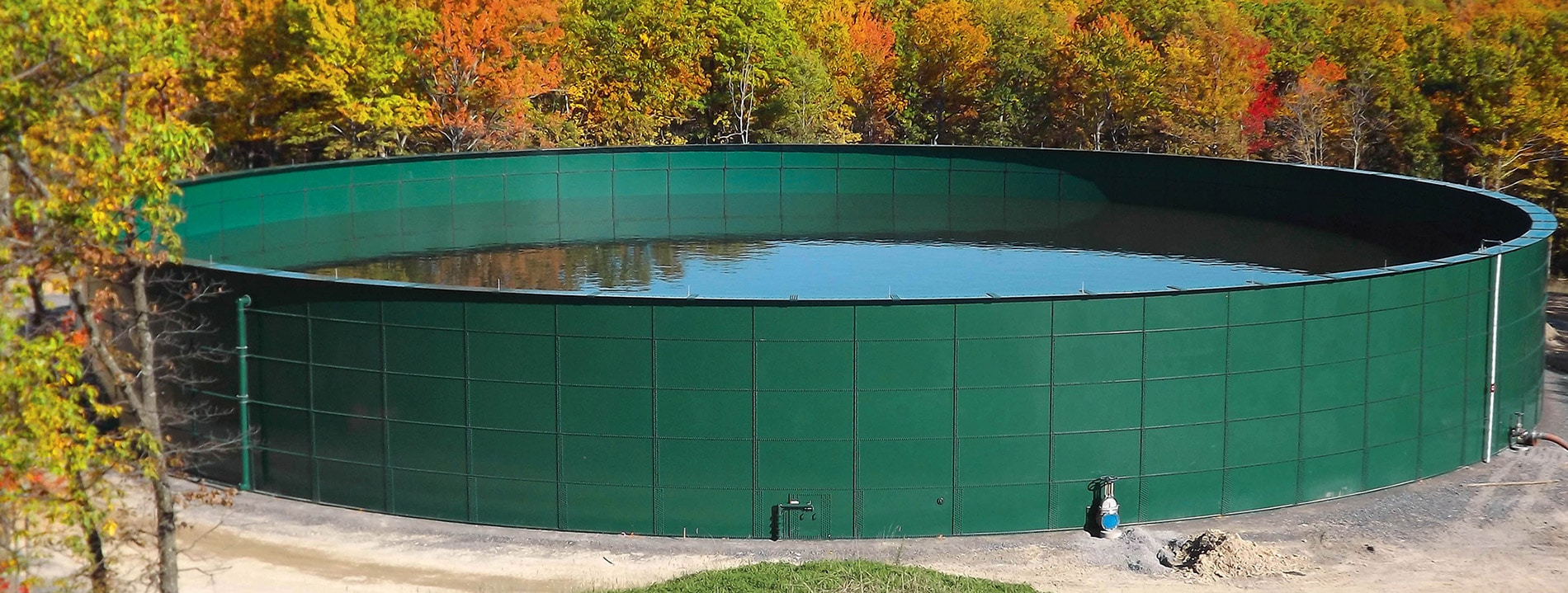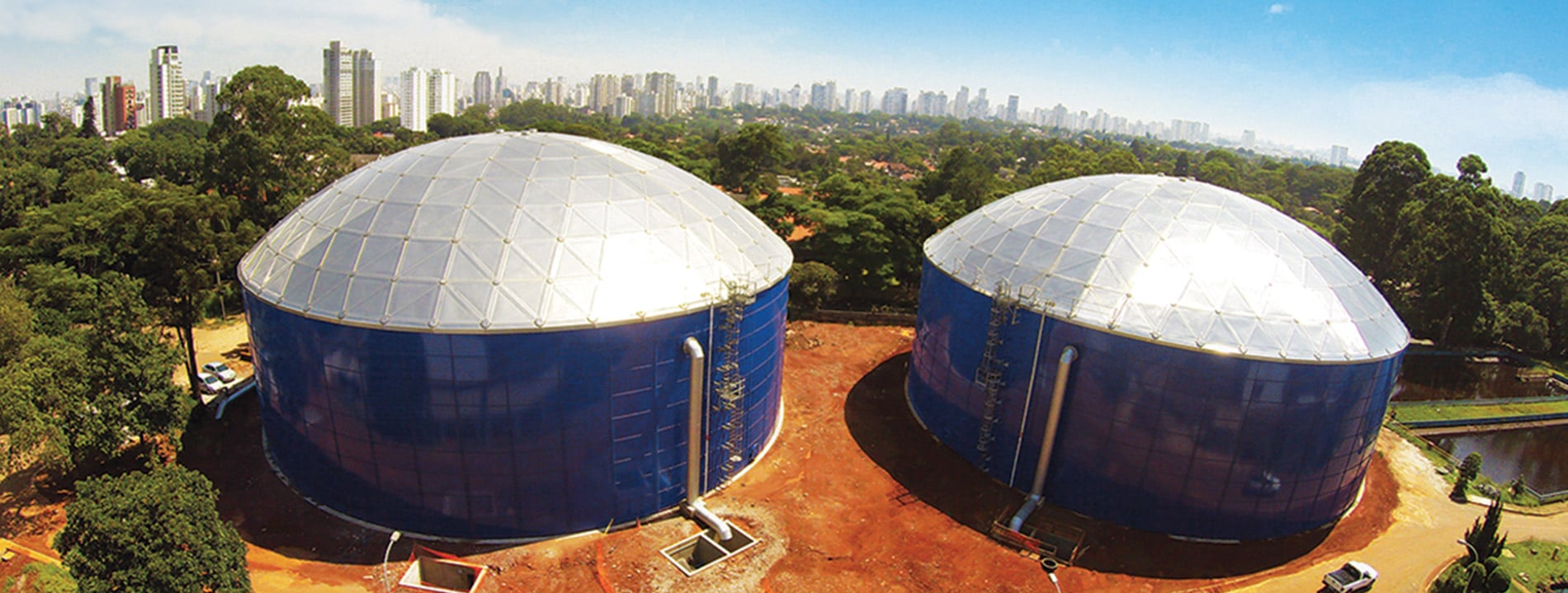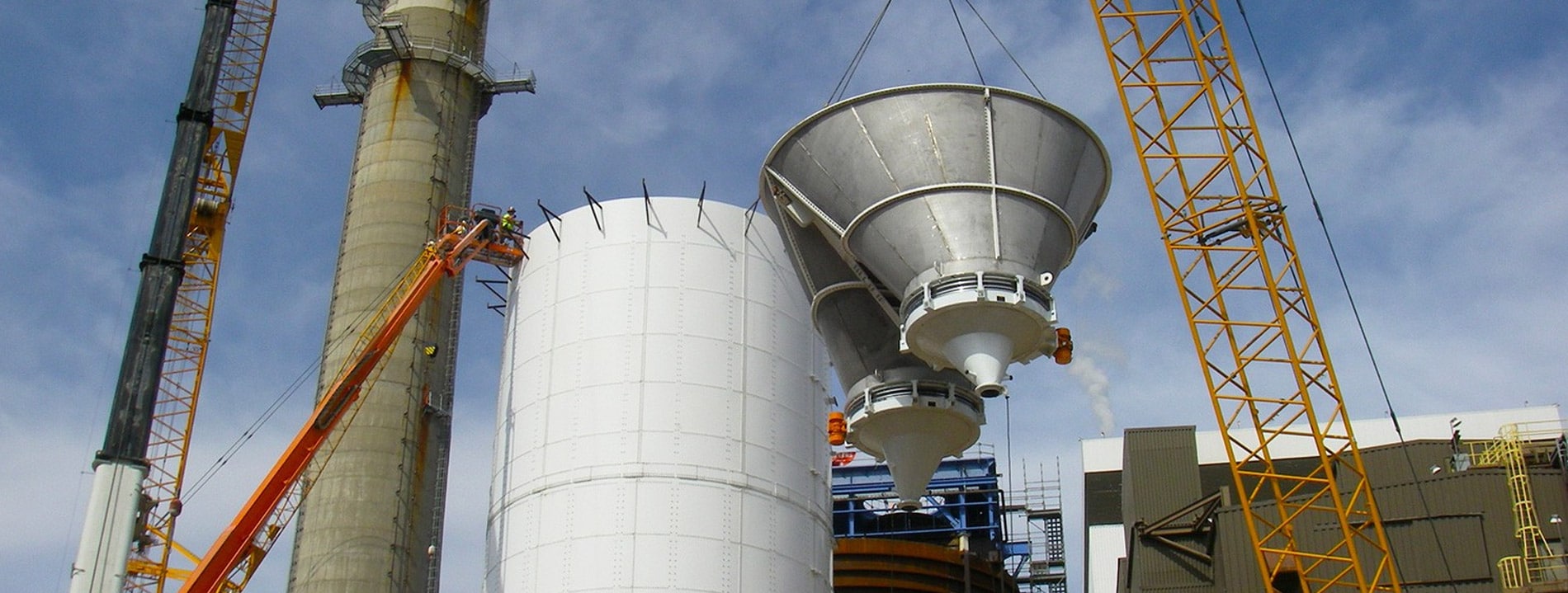African Tanks has been awarded the exclusive rights to represent Tank Connections and provide precision RTP (rolled, tapered panel) water storage tanks to the African market.
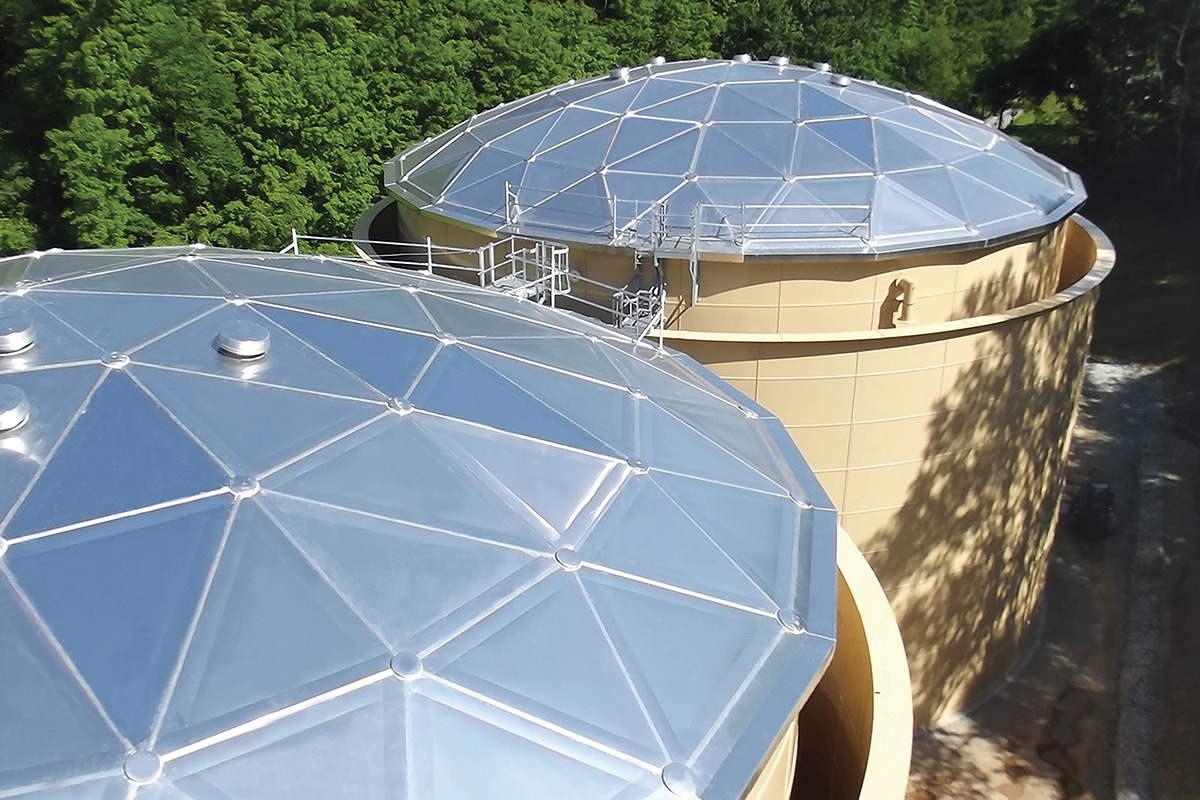
African Tanks - Tank Connection
The proprietary LIQ Fusion 8000 FBE powder coated system is the #1 performance interior tank lining available for water and wastewater storage applications worldwide.
While the proprietary EXT Fusion 5000 FBE & SDP (powder on powder) system provides unmatched performance compared to ALL exterior bolted tank coatings. The synchronised hydraulic jacking process is reviewed as the top field construction process based on safety and installed quality.
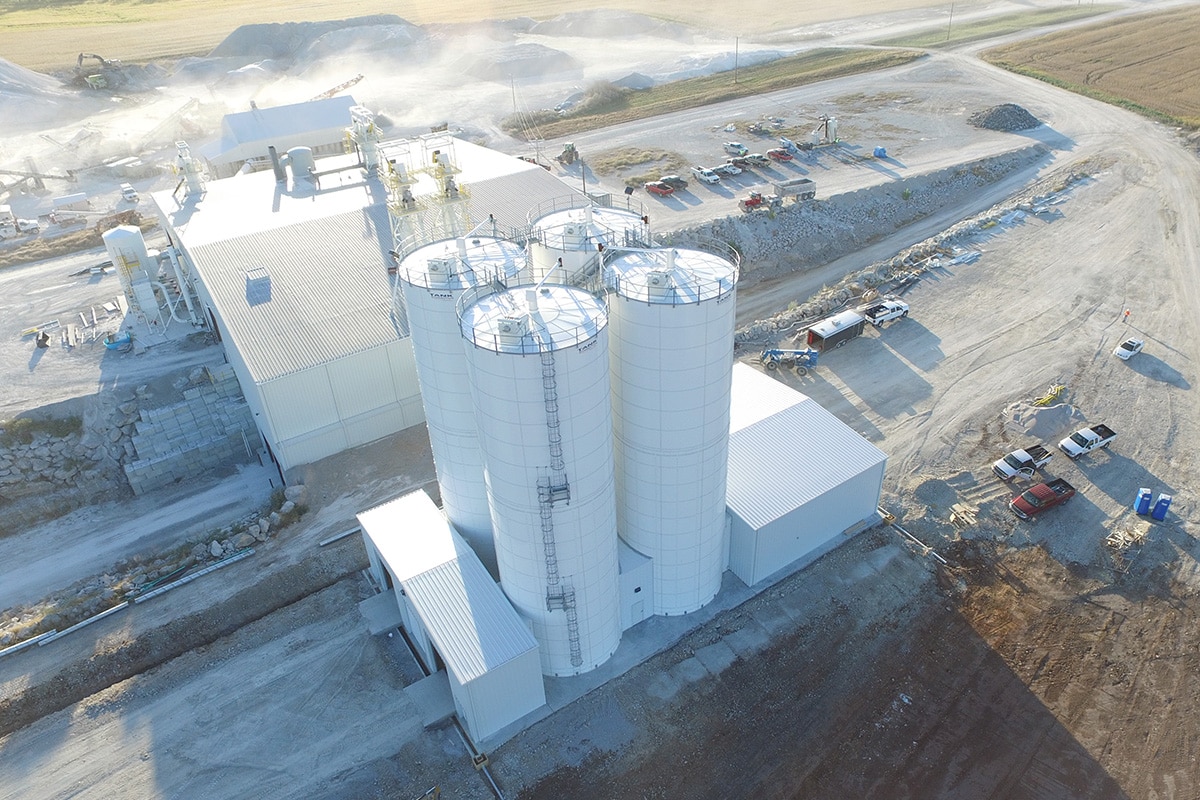
African Tanks - Dry Bulk Storage
Tank Connection is an industry leader of custom designed bulk storage tanks and integrated storage systems. Their storage products and services are recognised as the best offered in the industry.
Tank Connection is an industry leader of custom designed bulk storage tanks and integrated storage systems. Their storage products and services are recognised as the best offered in the industry. Bolted RTP Tank design:Panels are horizontal 180 cm x 304.8 cm wideUtilizes RTP (rolled, tapered panel) technology for precision alignment and exact fitThe RTP (rolled, tapered panel) bolt tank design is every bit as stringent as welded tank construction. Once assembled in the field, each bolt seam maintains an exact calculated value as reviewed through four types of analysis and edge tear-out. In contrast to field weld construction where a single analysis (joint efficiency) is reviewed and is subject to uncontrolled field conditions, bolted sectional seam analysis is finite and controlled.
#1 performance hopper tank design
- The NO LEAK bolted storage tank
- No internal ledges
- Heavy tank designs for bulk storage applications
- Unmatched Fusion powder coating system
- Field construction – top rated process, jack installation from grade level
Tank Connection is an industry leader of custom designed bulk water storage tanks and integrated storage systems. Their storage products and services are recognised as the best offered in the industry.
Ask African Tanks about our full range of warranty backed bulk steel water storage tanks.
Steel and Water Tanks Manufacturing Standards:
Evolution, Significance, and Importance
Steel water tanks have long been recognized as reliable and durable storage solutions for various industries and applications. Over time, the manufacturing of steel tanks has evolved, with the establishment of standards that ensure consistent quality, safety, and performance. This article delves into the evolution of standards in steel water tank manufacturing, highlights key standards in the industry, and emphasizes the importance of these standards in ensuring high-quality tank construction.
Evolution of Manufacturing Standards:
The development of manufacturing standards for steel water tanks has been a gradual process driven by the need for uniformity and safety. Initially, there were no specific standards for steel tank manufacturing, leading to variations in design, materials, and construction practices. However, as the industry matured and the importance of consistent quality became apparent, standards organizations stepped in to provide guidelines and benchmarks.
Key Standards in Steel Water Tank Manufacturing:
American Water Works Association (AWWA) Standards:
The AWWA has played a significant role in establishing standards for water tank construction in the United States. The AWWA D100 standard, "Welded Carbon Steel Tanks for Water Storage," outlines the design, fabrication, and construction requirements for welded steel tanks. It covers aspects such as material specifications, structural design, welding procedures, coatings, and inspection methods.
National Fire Protection Association (NFPA) Standards:
NFPA has developed standards for water storage tanks specifically focused on fire protection purposes. The NFPA 22 standard, "Standard for Water Tanks for Private Fire Protection," provides guidance on the design, installation, operation, and maintenance of steel tanks used for fire protection systems. It covers areas such as tank sizing, materials, corrosion protection, and firefighting connections.
European Standards (EN):
In Europe, the European Committee for Standardization (CEN) has established standards for steel water tanks. The EN 14015 standard, "Specification for the Design and Manufacture of Site Built, Vertical, Cylindrical, Flat-Bottomed, Above Ground, Welded, Steel Tanks for the Storage of Liquids," provides requirements for the design and fabrication of above-ground steel tanks. It includes provisions for materials, structural design, welding, and testing.
South African Standards:
In South Africa, water tank manufacturing standards are primarily set and regulated by the South African Bureau of Standards (SABS). The SABS develops and maintains a range of standards related to water tank construction, materials, and performance. Here are some key South African standards relevant to water tanks:
SANS 1731: This standard specifies the requirements for polyethylene tanks used for the storage of water intended for human consumption. It covers aspects such as design, materials, construction, testing, and labeling of polyethylene water tanks.
SANS 10089-1: This standard focuses on the design and installation of underground steel tanks for the storage of flammable and combustible liquids. It provides guidelines for the design, construction, and installation of steel tanks that comply with safety regulations for underground storage.
SANS 10160: This standard deals with the structural use of steel, including steel tanks. It outlines the general design requirements, materials, fabrication, and testing of structural steel components, ensuring their strength, stability, and durability.
SANS 10252-1: This standard provides guidelines for the design, installation, and maintenance of water supply and storage systems. It covers various aspects, including the design of water tanks, materials selection, sizing, and installation practices.
SANS 10254: This standard focuses on the internal lining of steel storage tanks for the storage of water intended for human consumption. It specifies requirements for the lining materials, application methods, and testing procedures to ensure water quality and prevent corrosion.
It's important for manufacturers and individuals involved in the water tank industry in South Africa to familiarize themselves with these SANS standards. Adhering to these standards helps ensure that water tanks are designed, manufactured, and installed in accordance with recognised benchmarks, promoting safety, quality, and compliance with South African regulations.
Note: Please keep in mind that standards can be revised or updated over time. It is advisable to consult the latest versions of the standards from the South African Bureau of Standards (SABS) or relevant authorities for the most up-to-date and accurate information.
Importance of Manufacturing Standards:
Manufacturing standards play a crucial role in ensuring high-quality steel water tanks. Here's why these standards are essential:
✔ Consistent Quality:
Standards define the materials, design parameters, fabrication techniques, and inspection protocols that must be followed during tank manufacturing. By adhering to these standards, manufacturers can consistently produce tanks that meet specified quality requirements, reducing the risk of structural failures, leaks, and premature deterioration.
✔ Safety and Reliability:
Steel water tanks are often used for storing valuable resources, such as drinking water or firefighting water. Adhering to standards ensures that tanks are constructed to withstand environmental loads, seismic forces, and internal pressures. This enhances safety, mitigates the risk of tank failure, and ensures the reliable storage of liquids over an extended period.
✔ Compliance with Regulations:
Standards in steel water tank manufacturing often align with regulatory requirements set forth by government bodies and industry associations. Adhering to these standards helps manufacturers meet legal obligations and obtain necessary permits or certifications. Non-compliance can result in regulatory issues, penalties, and reputational damage.
✔ Interoperability and Compatibility:
Standards promote interoperability and compatibility among different components of a water storage system. For example, adherence to standards ensures that tanks are designed to accommodate appropriate fittings, connections, and accessories. This facilitates the integration of tanks with pumps, pipes, and control systems, enabling seamless functionality and maintenance.
✔ Customer Confidence:
Steel water tank users, whether individuals or businesses, value the assurance that their tanks meet industry standards. When customers choose steel water tanks manufactured according to recognized standards, they can trust that their tanks have undergone rigorous testing, comply with quality benchmarks, and meet their specific needs.
The evolution of manufacturing standards in steel water tank production has significantly influenced the industry, ensuring consistent quality, safety, and performance. Standards organisations such as AWWA, NFPA, and CEN have played a pivotal role in establishing guidelines for tank design, fabrication, and construction. Adhering to these standards is of paramount importance for manufacturers and customers alike.
Manufacturing standards ensure consistent quality, enhance safety and reliability, and promote compliance with regulations. They provide a framework for materials, design, fabrication techniques, inspection procedures, and testing methods, enabling the production of steel water tanks that meet stringent requirements.
By choosing steel water tanks manufactured in accordance with recognized standards, customers can have confidence in the durability, structural integrity, and longevity of their tanks. These tanks are designed to withstand environmental loads, internal pressures, and other demanding conditions, ensuring reliable water storage for various applications.
Moreover, adherence to manufacturing standards promotes interoperability and compatibility within water storage systems, simplifying installation, maintenance, and integration with other components.
Trusted by these companies





